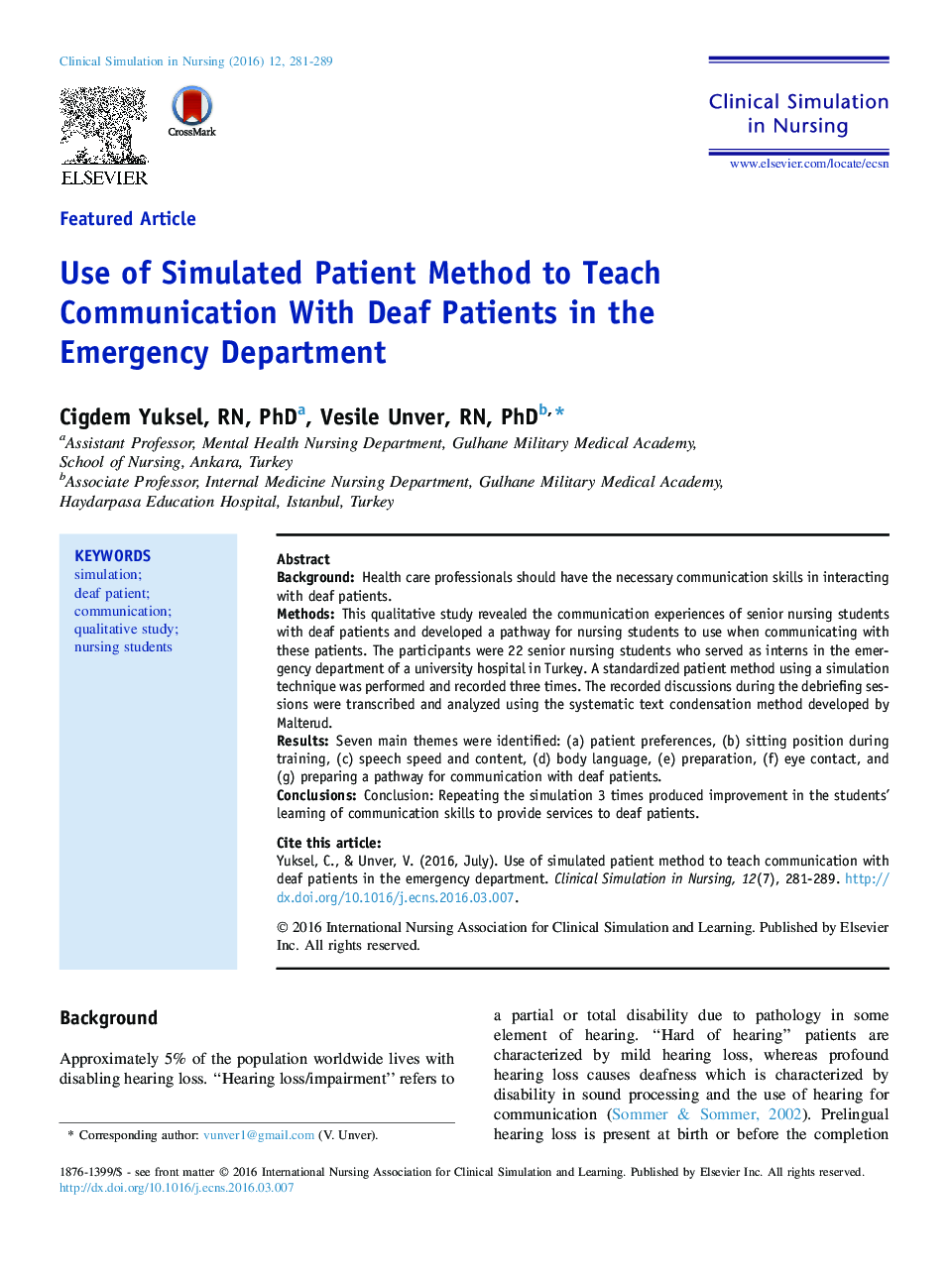| Article ID | Journal | Published Year | Pages | File Type |
|---|---|---|---|---|
| 2646887 | Clinical Simulation in Nursing | 2016 | 9 Pages |
•Offering students an opportunity for discovery-based learning in the simulation environment can effectively help to teach nursing students efficient communication strategies for use with deaf patients.•Repeating the simulation three times produced improvement in the students' learning.•The findings from this research provide a pathway for nursing students to use when communicating with deaf patients.
BackgroundHealth care professionals should have the necessary communication skills in interacting with deaf patients.MethodsThis qualitative study revealed the communication experiences of senior nursing students with deaf patients and developed a pathway for nursing students to use when communicating with these patients. The participants were 22 senior nursing students who served as interns in the emergency department of a university hospital in Turkey. A standardized patient method using a simulation technique was performed and recorded three times. The recorded discussions during the debriefing sessions were transcribed and analyzed using the systematic text condensation method developed by Malterud.ResultsSeven main themes were identified: (a) patient preferences, (b) sitting position during training, (c) speech speed and content, (d) body language, (e) preparation, (f) eye contact, and (g) preparing a pathway for communication with deaf patients.ConclusionsConclusion: Repeating the simulation 3 times produced improvement in the students' learning of communication skills to provide services to deaf patients.
